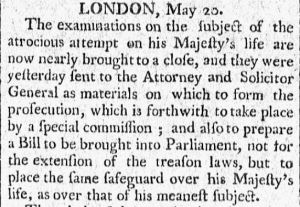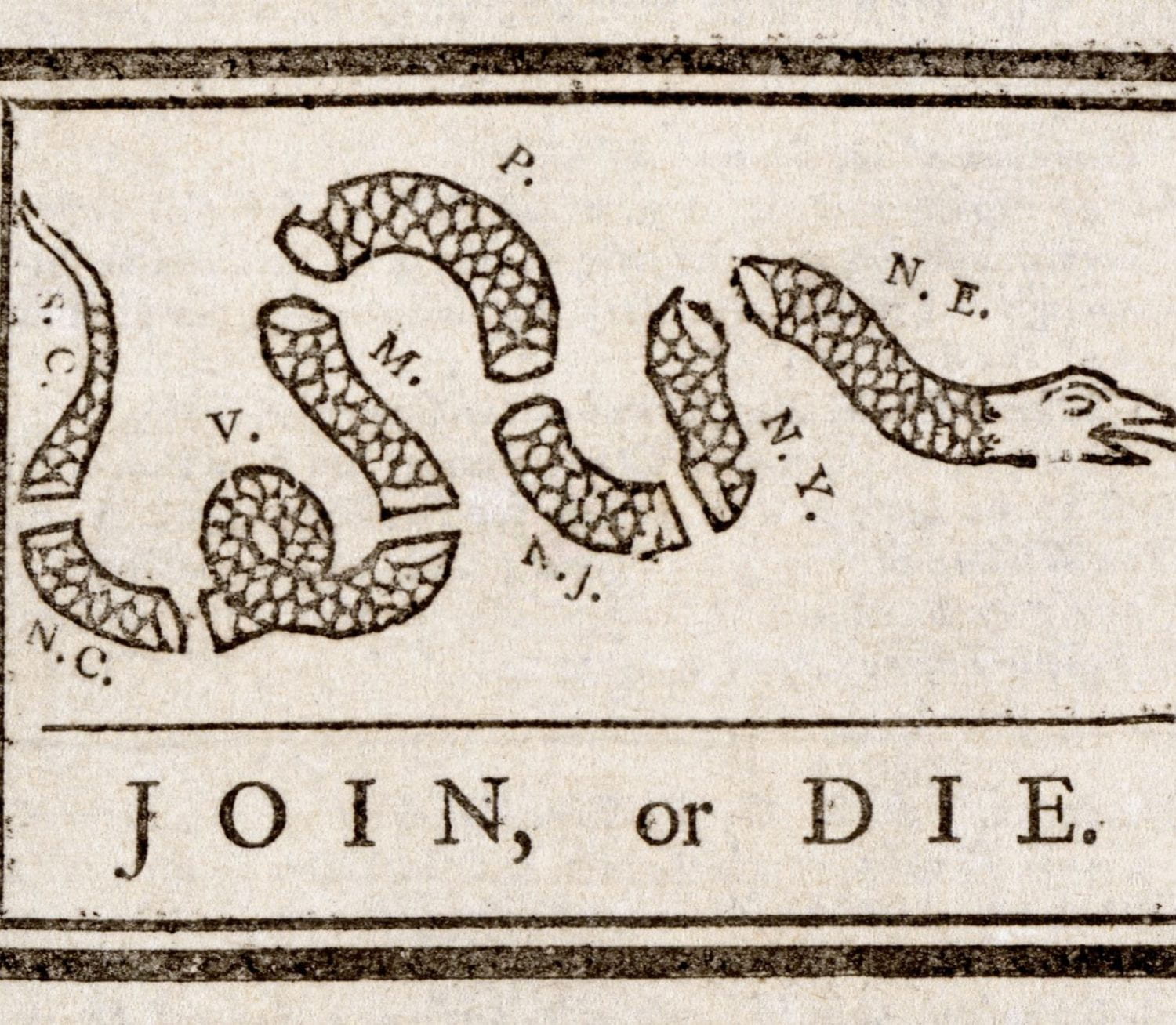By: Mollie Bowman
When I first started looking through databases, I was not entirely sure what exactly I wanted to look for, so I ended up just searching whatever would come to mind on many different platforms. Eventually, I found myself on Readux’s American Historical Newspapers database where I searched up the phrase “religious frenzy,” a subject that fascinated me while reading Wieland. This search brought up quite a few results, but I ended up finding a very interesting article that related the results of an investigation into a man who attempted to murder the King in London. This same story was printed in many American newspapers in the database, but the one I will be referencing is from the issue of the Connecticut Journal printed on July 16th, 1800.

The newspaper itself has quite a lot crammed into one page. It consists of four columns filled with stories in a relatively small typeface, which allows for a lot of information to be on a singular page. The article about the attempted murder takes up a column and a half of the page, which is quite a lot considering that no other story on this page goes over half a column. The type itself is really easy to read, as the only real difference that it poses to contemporary lettering is the use of the long s. Additionally, the newspaper seems to have been well-kept and was scanned nicely for the database. There seem to be almost no blemishes on this archival piece, save for a bit of faded ink along the outside of the newspaper. Though the database did not list the dimensions of the newspaper, it seems to have been relatively large. It seems clear from the layout of this piece that this newspaper is doing what it is meant to do: deliver as much news as possible without using too much paper.
The content of this article is just utterly fascinating. It is an update on the completed investigation into a man who attempted to assassinate the king at a London theatre. The report tells that the man, Hadfield, had been previously deemed insane but had been let back out into the world. He soon met another man, Truelock, who was “touched with a religious frenzy” and “filled the brain of Hatfield with some incoherent and frantic superstitions.” The most interesting part of this article is when it relates how Hadfield is convinced to go through with this treasonous attempt: “[Truelock] told him of a divine commission which he had to perform for the good of mankind––that he was appointed to purify the earth––that in truth [Truelock] was God, and that he wanted a second God to assist his work, and he would appoint Hatfield to be his son.” I personally find this fascinating, and its parallels to Wieland are quite evident. Though this article was printed two years after Wieland’s publication, it shows that this idea of being spoken to by an apparent God and pushed to kill was actually a reality (and one that, importantly for the novel, was occuring in Europe). I think this piece is totally interesting on its own, but it also reveals so much about the fears of that world that Charles Brockden Brown was writing within.

